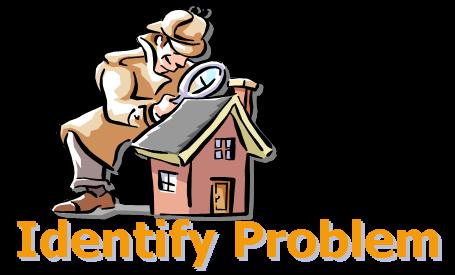Defining the Problem
 In almost every problem solving methodology the first step is defining or identifying the problem. It is the most difficult and the most important of all the steps. It involves diagnosing the situation so that the focus on the real problem and not on its symptoms.
In almost every problem solving methodology the first step is defining or identifying the problem. It is the most difficult and the most important of all the steps. It involves diagnosing the situation so that the focus on the real problem and not on its symptoms.
Another way of thinking about Problem Definition would be: the goal or ideal state defines how much of a problem exists or even whether or not there is a problem. (Robert Harris, 1998)
For example, Small children have difficulty putting on their own jackets and coats. For mothers with one or maybe two small children, this is not a problem. It is a routine. However, for daycare teachers who have 10 or 12 small children, this is a problem. Or in another example, fear of speaking in public only becomes a problem when one's employment is dependent on public speaking.
 Frequently finding
or identifying a problem is more important than the solution. For example,
Galileo recognized the problem of needing to know the speed of light, but did
not come up with a solution. It took advances in mathematics and science to
solve this measurement problem. Yet Galileo still received credit for finding
the problem.
Frequently finding
or identifying a problem is more important than the solution. For example,
Galileo recognized the problem of needing to know the speed of light, but did
not come up with a solution. It took advances in mathematics and science to
solve this measurement problem. Yet Galileo still received credit for finding
the problem.
Sometimes problem definition may be nothing more than the art of asking the right questions at the right time.
When problem solving with young children, a good approach for identifying the problem is to state the facts in the simplest terms. For example, "So what I see is that there is only one TV and two children who each want to watch something different."
is to state the facts in the simplest terms. For example, "So what I see is that there is only one TV and two children who each want to watch something different."
Licensed under the Creative Commons Attribution-NonCommercial-ShareAlike 2.5 License
Brought to you by CReducation.org.